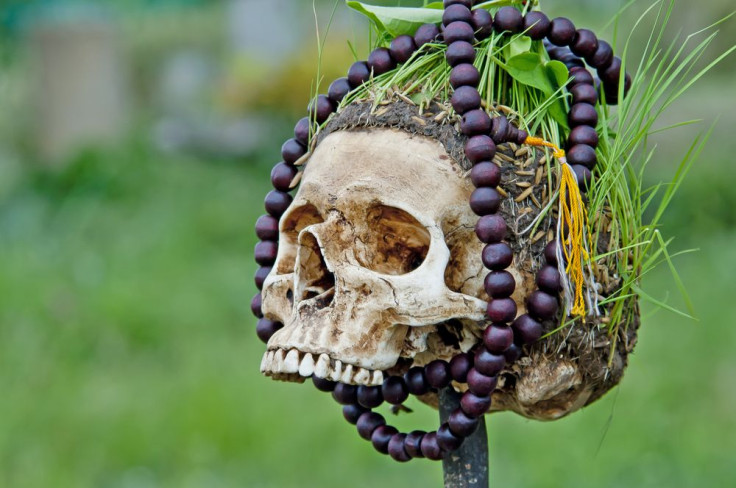Eating Human Brains Led To A Tribe Developing Brain Disease-Resistant Genes

The Fore people, a Papua New Guinea tribe, are most famous for kuru, a disease caused by eating the dead. By studying this tribe, University College London researchers say they have identified a gene that protects against some forms of prion conditions, including Creutzfeldt-Jakob disease. According to the scientists, continued research in this area could result in a better understanding of — and possible treatments for — many types of degenerative brain illnesses, including Alzheimer’s, Parkinson’s, Mad Cow, and Creutzfeldt-Jakob among them.
But first let’s backtrack a bit... eating the dead?
Shiver
Approximately 20,000 Fore people live in the Eastern Highlands Province of Papua New Guinea, where they are separated by the Wanevinti Mountains into North and South groups. The Fore people are subsistence horticulturalists, who practice a slash-and-burn technique of cultivation. However, during the late 1950s and early 1960s — shortly after outsiders began to enter their world and study the tribe — the tribe experienced an epidemic of kuru, a degenerative neurological disease. More than 1,000 tribe members died of this always fatal illness, which scientists classify as a transmissible spongiform encephalopathy or prion disease.
Observing the tribe, scientists traced the rare viral infection of the central nervous system to a unique cause: Cannibalism.
Apparently, the Fore people expressed respect for their dead family members by consuming them. In particular, the men ate the flesh, while the women ate the brains (and also fed bits of this organ to children and the elderly). The pattern of deaths, which were far more common among the women, suggested kuru was linked specifically to the consumption of brains.
In the Fore language, kuru means shiver. The usual first symptoms of the disease are tremors, difficulty balancing, and slurred speech. Mood changes soon follow. Eventually, afflicted people become unable to stand or eat, and usually they die in a comatose state within six months to a year following the first signs of disease.
However, some families at the very center of last century’s kuru epidemic never developed this disease. Naturally, Dr. John Collinge of UCL Institute of Neurology's prion unit and his colleagues wondered why, and so they investigated.
Evolution
Examining the genes of these exposed but resistant families, they found an unusual alteration in their code: the amino acid, valine, had been swapped for glycene, a different amino acid. Remarkably, Collinge and his colleagues had never seen this difference anywhere else in the world. They experimented to see if indeed this unique swap-out linked back to kuru-resistance.
After genetically engineering special mice with the same variation, they discovered the mice to be completely resistant to kuru and to Creutzfeldt-Jakob disease. A second group of mice they genetically modified for even stronger protection were found to be resistant to 18 prion strains. (Prions, type of protein, change shape and then accumulate, causing damage to the brain.) Collinge and his colleagues describe the unique genetic variation as an example of human evolution, since the ravages of an epidemic "selected" a gene that would confer protection against this form of death.
Continued research will help the researchers better understand the molecular basis of this genetic effect on prion diseases. With millions of people suffering from dementia today — and total cases projected to reach 75.6 million by 2030 — this research could prove life-changing for citizens around the globe.
Importantly, the Fore people no longer practice cannibalism.
Source: Asante EA, Smidak M, Grimshaw A, et al. A naturally occurring variant of the human prion protein completely prevents prion disease. Nature. 2015.



























